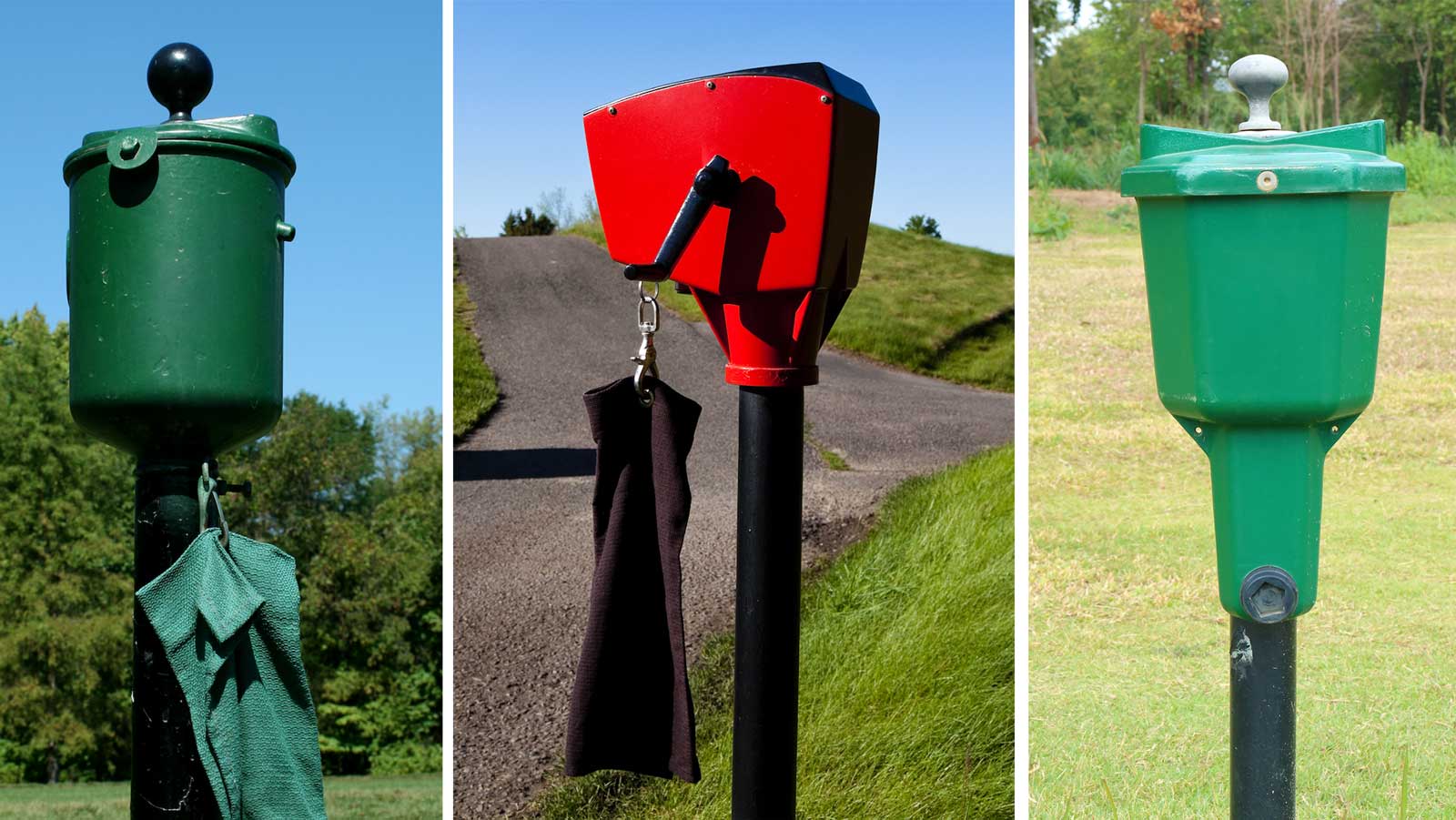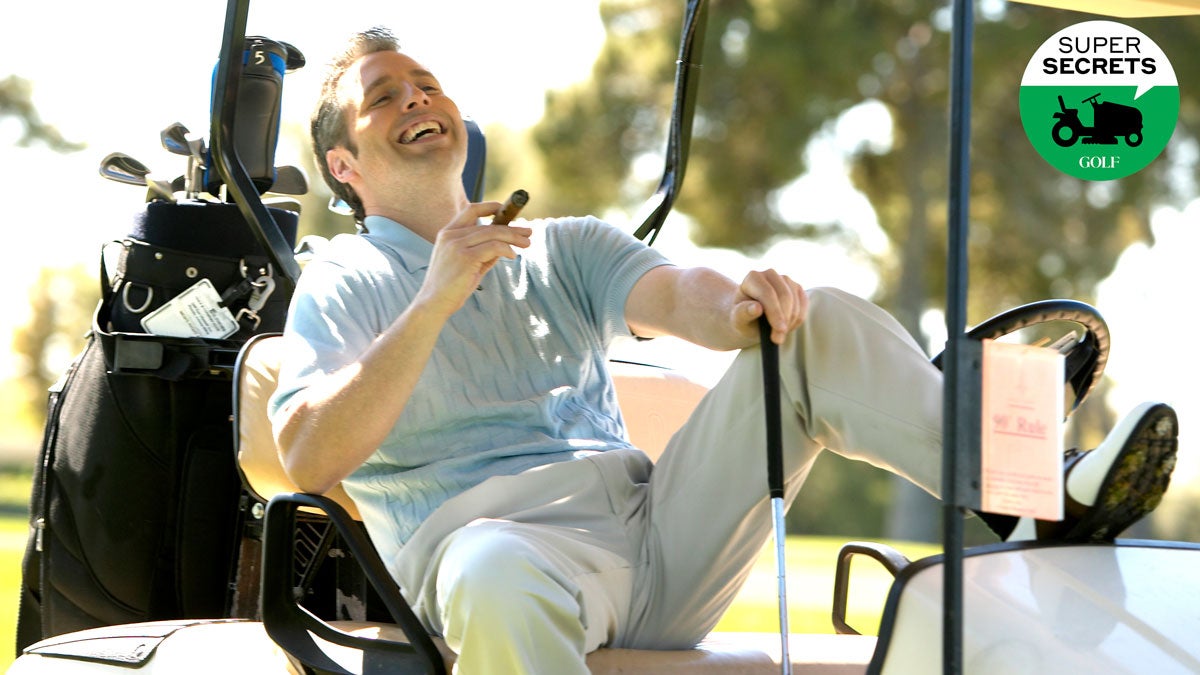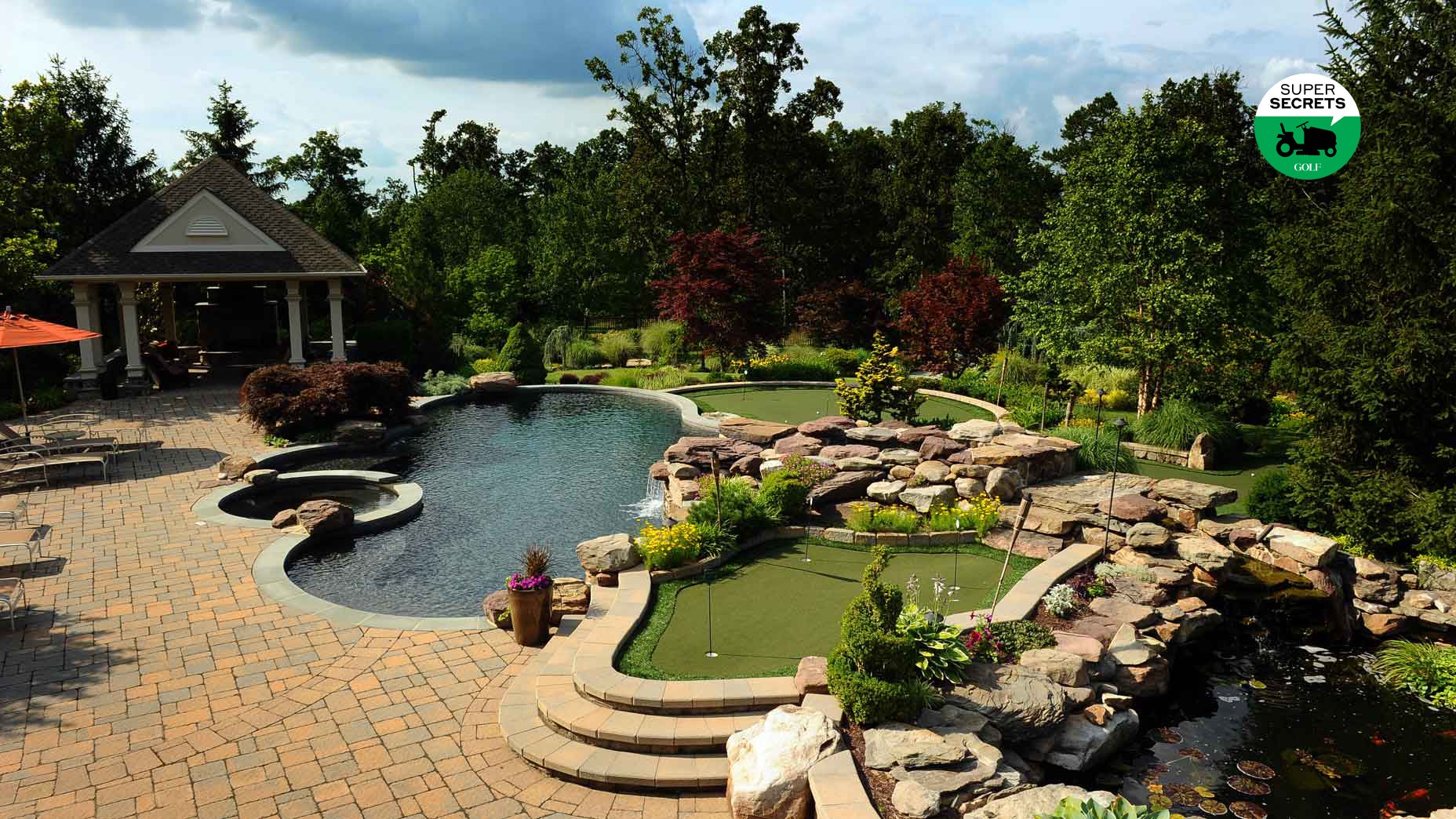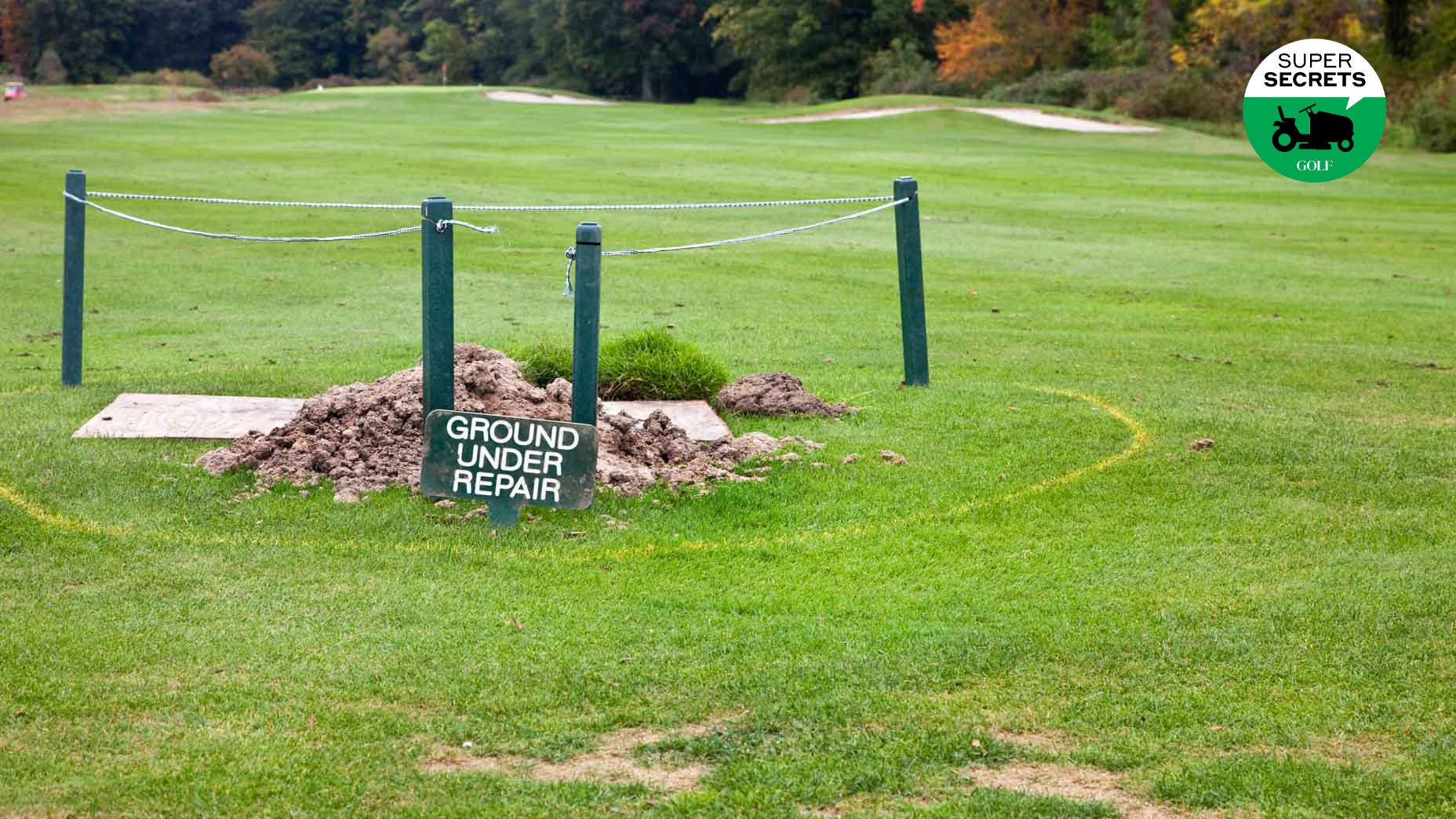Matt Guilfoil would never tell you not to wash your golf balls.
But he has some thoughts on how you ought to clean them.
Spoiler alert: As he sees it, anything beyond a wet towel is probably overkill.
Guilfoil is a veteran superintendent and a co-host of From the Jingweeds, a podcast devoted to the turf-care trade. Though he works in Arizona, at Desert Canyon Golf Club, he was born and raised in Massachusetts, and he has the accent and the Bill Burr-ish irreverence to match. He also has a New Englander’s sense of pragmatism. He’s allergic to extravagance and silly extras. If a wrinkle in the universe opened tomorrow and swallowed every tee-side ball washer, the planet, Guilfoil believes, wouldn’t be worse off. It would probably be better.
Guifoil concedes to a regional bias. In other parts of the country where courses can turn soppy from downpours and snowmelt, Guilfoil says he understands why some might feel that a towel is not enough to handle 18 holes of mud.
12 golfer habits that *really* annoy superintendents, according to superintendentsBy: Josh Sens
(Even then, a towel probably is enough, he adds in a stage whisper. But he’s trying to be diplomatic here.)
In Arizona, though? “Unless I’m overseeding, there’s really not a lot that’s going to get on your ball,” Guilfoil says.
Which doesn’t mean Desert Canyon doesn’t have ball washers. It has 14 of them. They pre-date Guilfoil’s arrival, vestiges of an era when they pretty much came standard. Over the years, some have broken. They have not been replaced. Among reasonable people, Guilfoil says, they are not missed.
Why this beef with the analog machines?
Like every object on a course, ball washers cost money (upward of $250 each) and require upkeep. They get weathered, battered. Birds tag them with their droppings.
“You’ve got to paint them once or twice a year,” Guilfoil says. Some deep-pocketed courses go so far as to have their ball washers sandblasted at body shops.
And that’s just the aesthetics. Parts on ball washers wear out and jam up. The soapy water (or just water; not all courses use soap) inside the machines starts to stink, Guilfoil says. (Don’t even get him started on those built-in ball washers on golf carts; those get next-level gross). The bad smell can be killed with vinegar or Pine-Sol. “But then it smells like vinegar or Pine-Sol, and golfers won’t get near it.”
Courses with big budgets can afford the busywork of cleaning and repairing. But at a property with lean staffing? Please.
“Why have a product that you don’t have the staff to properly take care of?” Guilfoil says. “You’re setting yourself up for failure.”
That a course should be expected to provide golfers with water-filled equipment with which to clean their balls strikes Guilfoil as absurd — even more so in times of drought.
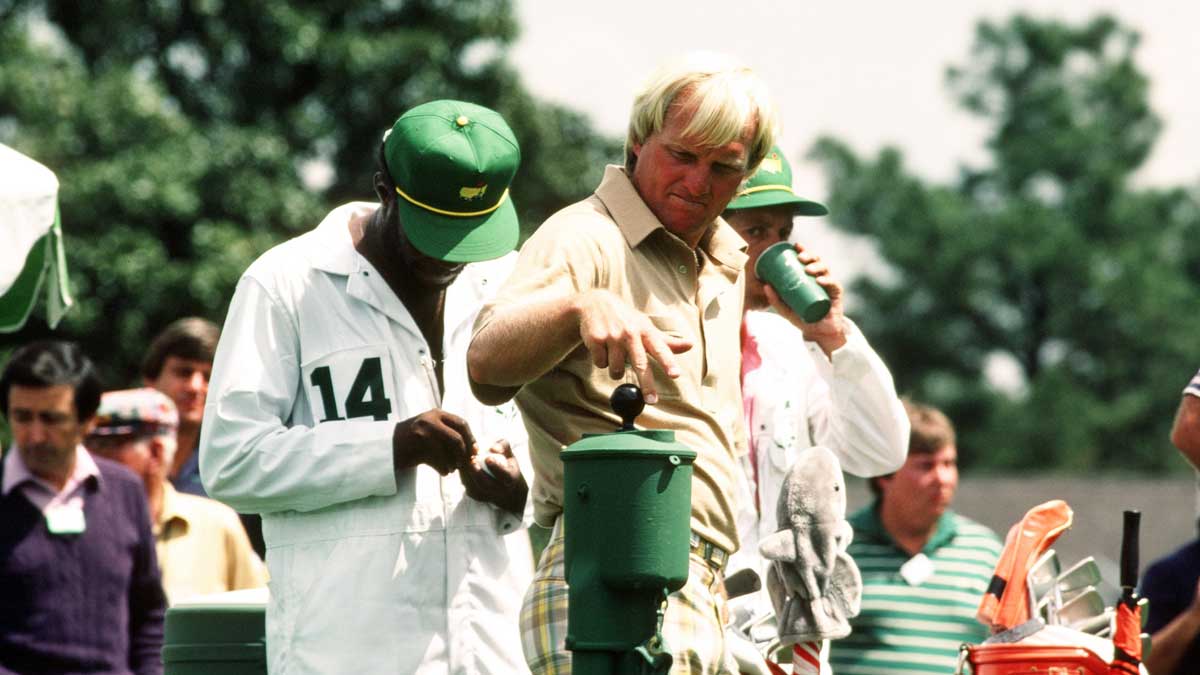
How did the dang things ever become mainstream?
Golfers presumably have been washing balls for as long as they’ve been whacking them. But precisely when the practice gave rise to a commercial product is hard to say. As early as 1895, Spalding was selling a pocket-size washer called the Edinburgh Ball Cleaner that looked like a makeup compact, replete with a sponge. And by the 1920s, evidence suggests that stationary washers, akin in their design to the machines we know today, were growing prevalent on U.S. courses, a trend that presaged a post-war drift toward ornamentation in American golf. On courses increasingly pinched by houses, lined with cart paths, spritzed by waterfalls and speckled with elaborate tee-box signage, ball washers came standard, part of the package deal in an increasingly accessorized sporting landscape.
7 maintenance mistakes that golfers make too often, according to superintendentsBy: Josh Sens
More recently, though, the industry seems to have been shaken to its senses. The rise of modern minimalism has helped strip courses bare. Ditto the pandemic. Throw in a swelling population of younger golfers, with their taste for Instragammable goodies like leather carry bags and hipster head covers, and you have the makings of a cultural movement. These days, towels aren’t just useful; they’re part of a look.
All of which is bad news for the ball washer. Though hard stats are elusive, demand for the machines is waning, according to Tony Clay, a sales manager of leading golf supply company, Wittek Golf Supply.
“I just had another course tell me they weren’t going to replace theirs,” Clay says.
“Cleaning them. Repairing them. Changing the water. The feeling seems to be, why deal with all of that.”
He is not the only one who’s noticed. Terry Buchen, who worked as a superintendent for more than 50 years and remains active today as a consultant, recalls a period when some high-end clubs had two ball washers on every hole, one each for the back and forward tees. You could clean your Titleist in a ball washer at the tips, then smother-hook your drive into another ball washer a hundred feet ahead.
“You don’t see that kind of thing anymore,” Buchen says. “The idea now is to get rid of clutter. Just a sign with the hole number and yardage. What more do you need?”
Depends on who you ask. As Guilfoil sees it, perspectives are shaped by generational divides. “Take a guy like my father-in-law,” Guilfoil says. “He never misses an opportunity to use a ball washer. He’ll walk 40 yards out of his way just to wash his ball.” He’s also part of a vanishing breed.
“Once the Boomers are gone,” Guilfoil says, “I see the ball washers going with them.”
Once the Boomers are gone, I see the ball washers going with them. Terry Buchen, former superintendent
At the risk of sounding morbid, Guilfoil can hardly wait. Time has already helped reduce his headaches. A few years ago, at Desert Canyon, the ball washer on the 4th hole bit the dust, the most recent casualty among the machines. Guilfoil did nothing. When the next ball washer breaks, he will do the same. His goal is to trim the herd to about 8.
“No more than one ball washer every other hole,” he says.
Some golfers will grouse. Some golfers always do. But most will happily adapt if they haven’t already. They will show up with a towel. They will wet it on the range, where many clubs provide buckets of soapy water, or run it under the restroom sink, and they will use it when they feel the time is right.
“You don’t really need anything else to clean a ball,” Guilfoil says.
Got it? For other hygiene matters, you’re on your own.
